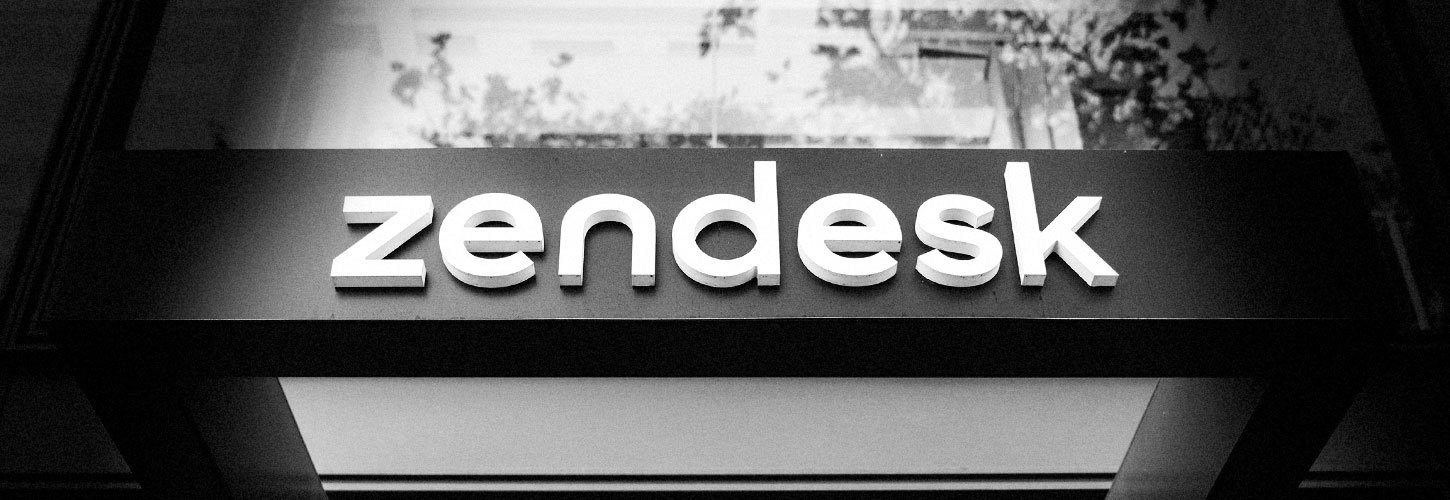
Tear up the
playbook!
Don’t be afraid of failure, be willing to take risks and experiment, and if you must fail, fail fast.
This week we get Up-Close with last year’s Digital Masters Awards runner-up for Excellence in Marketing, Prelini Udayan-Chiechi, SVP Global Digital & Regional Marketing at Zendesk.
Prelini is a seasoned marketeer whose career has gone from strength to strength. Formerly at IBM, Adobe, Lithium Technologies and Bazaarvoice, she has now been at Zendesk for nearly six years. During this interview, Prelini speaks of her career highlights to date, the future of marketing and much more.
What is your career highlight to date? How has this influenced you as a leader?
In recent years a real highlight has been The Zendesk Morning show. When COVID-19 hit we had to think about how to adapt. We were driven to create new short forms of content in small segments that would form part of longer content that could be shared. It was actually inspired by watching Apple TV’s The Morning Show. Previously, we had primarily released long-form content in webinars or short-form content on videos or stories or experiences, but this was really changing the landscape of how we brought content forward in the B2B world.
It was a collaborative success as so many people, both Zendesk and our customers and clients were able to be involved. It allowed us to pivot quickly, try something new and take risks, which led to us picking up the Best Live Stream: Virtual Event of the Year Award at the Vimeo Festival, 2020.
“It allowed us to pivot quickly, try something new and take risks, which led to us picking up the Best Live Stream: Virtual Event of the Year Award at the Vimeo Festival, 2020.”

How do you think the role of a marketing leader has changed during your career?
I have seen three levels of change:
Presence of digital (in absolute terms as well as a proportion of channel mix) and the need for an online presence through multiple organic and non-organic channels has become more prevalent.
1
How we measure marketing. Full attribution models have greatly evolved and allowed us to measure more precise-than-ever ROI contributions to campaigns and where to place investments. Market leaders must be able to use data to drive decision-making, and be able to speak commercially to the rest of the business.
2
Leaders must be able to pivot, and adapt to the changing environment by being flexible and adaptable, whilst not being afraid to fail fast. The greatest rewards come through risk-taking.
3
What interesting trends have you see in your function in the last twelve months
(new channels/ways of shopping; tools; measurements, etc)?
The two biggest trends that we have seen develop in the past twelve months is firstly, the tools that allow for a more targeted account approach through propensity and account scoring versus lead scoring. This creates greater visibility into an account and company and reveals where your teams should be focusing their efforts. Secondly, the rise of tools that allow for better optimisation and integration of improving conversion in the funnel mix. We can now be far more targeted and act in a much more joined-up way, where digital is used throughout the funnel, ensuring it is in a more programmatic end-to-end manner.
What does the future of marketing look like in 2025 and beyond?
ABM will continue to evolve and there will also be a continued data evolution. Tying that to the way you go to market will affect everything and unite the whole organisation through the GTM cycle together. In addition, marketing will need to become more commercially astute – it will have to speak and interact using the language both sales teams as well as senior management require. Lastly, we are not done with innovation, as we saw digital change and rise to new heights during COVID, I believe there is more creativity that will be open to us in the coming years.
2025
The War-Time CMO – How has the current economic and market context impacted your strategy?
To succeed as the War-Time CMO your ability to pivot and communicate as a leader and lead through times of change is vital. How you show up every day; how you inspire your team; how you roll up your sleeves and understand the detail in order to empathise with the pain your team is going through in times of adversity - all these things matter. The best way to understand your team’s pain-points is by really understanding what they are facing and being open to feedback in the business to remove blockages. One way to do that is through listening circles and roundtables, another is to open all-hands and skip-level meetings. The other thing that is vital for a War-Time CMO is to know how to get their teams in – and out - of the change curves effectively.
“The best way to understand your team’s pain-points is by really understanding what they are facing and being open to feedback in the business to remove blockages.”
What would be your advice for CMOs leading through economic challenges for the first time?
Tear up the playbook! Don’t be afraid of failure, be willing to take risks and experiment, and if you must fail, fail fast. Foster an environment that encourages innovation, creativity, accountability and proactiveness. Empower your employees to not be afraid to make tough decisions. Currently, most businesses allocate a small percentage of their budget to risk-taking or experimentation activities. In hard times, I would not be afraid to pivot a greater portion of your budget to experimentation. It is important to be willing to take this risk on in challenging times in particular, because it is during these times when driving for incrementality is simply not enough.
Finally, keep front-of-mind how your approach, how you show up and how you lead affects the whole organisation, not just your marketing department. The decisions you make as a CMO are going to have a far broader influence across the whole company.
At what stage do you believe a business needs to switch from acquisition-focused activity to heavier investment in brand?
Organisations need to start building their brand from the get-go and building a base in the first place. I believe performance can be used for both brand building and acquisition, particularly when working within limited budgets. These days there is so much you can do with digital ads. Think of how blending digital ads can be used and be creative with your budget.
The stronger your customer base, the more they can be used as your brand champions. Use customer testimonials (your Customer Services team can help bring them to life) and bring customer storytelling to life in your communications strategy. Challenge the status quo by bringing your customers’ perspectives into what and how you communicate in your marketing activity.
How do you strike the right balance between acquisition activity and brand-building on an ongoing basis?
Look at where you are in the funnel and what needs to be achieved (such as what are your key markets, etc) as budgets are not limitless. Think creatively if you have a constrained budget, such as using full package approaches with sponsorship where you can tie branding to acquisition. This helps make budgets go a lot further.
“Listen to your teams; they are on-the-ground and some of the best ideas can be formed right within your organisation.”
Do you believe both can be measured in similar ways?
The metrics differ as the ROI relates to various stages of a funnel. Measuring relevant metrics at every stage of the funnel is vital as it gives you a better-rounded cost per acquisition. It is important to set the right metrics across each funnel stage and measure every activity you do, and be prepared to adjust. At some parts of the funnel, a good ROI might be 2:1, but at another part of the funnel 10:1 might be the goal. Look at measurement across the whole funnel and take a holistic approach.
Any suggestions of great books / podcasts / content?
Adam Grant’s podcast – it is great for inspirational speakers.
Make Your Bed by William H. McRaven
Growth Mindset by Carol Dwerk
Night Owls and Morning Larks
This resource has helped me think differently and adaptively on how I manage teams. The premise is that people’s creativity and innovation come to them at different times of the day – some work better in the mornings; others in the evenings; and some late at night. It has taught me to allow people in my teams to work in their own time, and to create an environment that fosters different approaches to innovation. It is important that we remain flexible to allow individuals to flourish in their own rhythm and to be output-based in and of itself versus when this output must occur during the day. I work in a truly global leadership team and my experience is that you get so much more from people this way. COVID has allowed different timezones to come together (there are silver linings of the forced shift to virtual) and the above has been particularly important in managing distributed global teams.
Whilst this is not a content or podcast suggestion, I would encourage all employees to join resource or community groups (Zendesk has 6 of them in their business, ranging from Women in Engineering, Veterans group, Pride group, Mosaic, etc). Encourage your teams to take part in these resource groups. It brings skillsets together and contributes to wider thinking across the entire organisation beyond people’s roles and is a great source of information, creativity and innovation. I encourage all people to partake in them.

